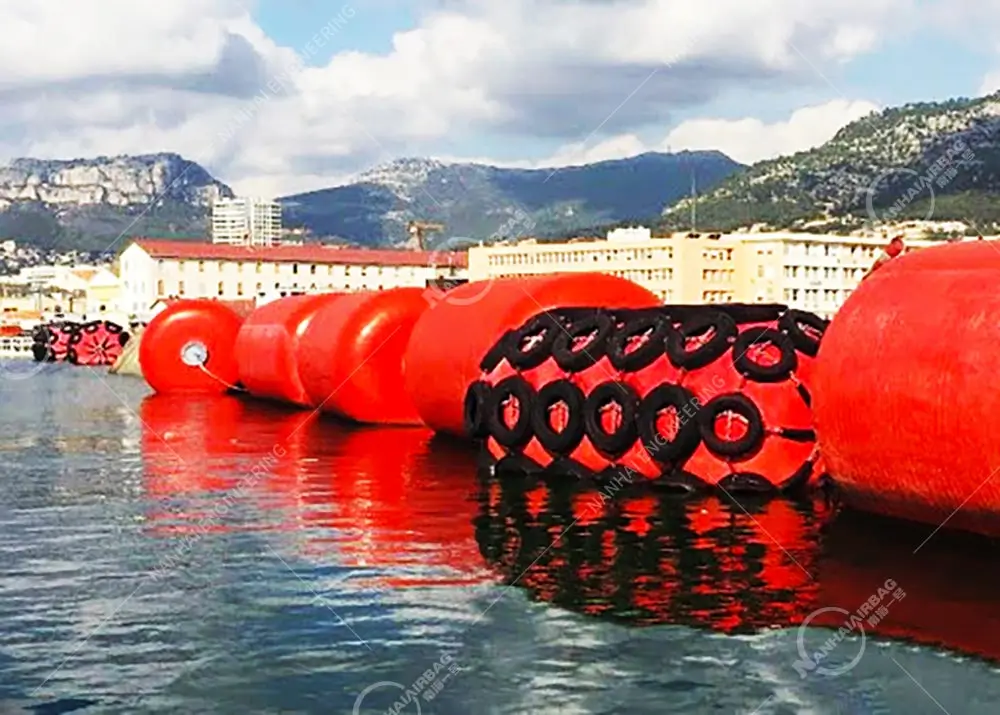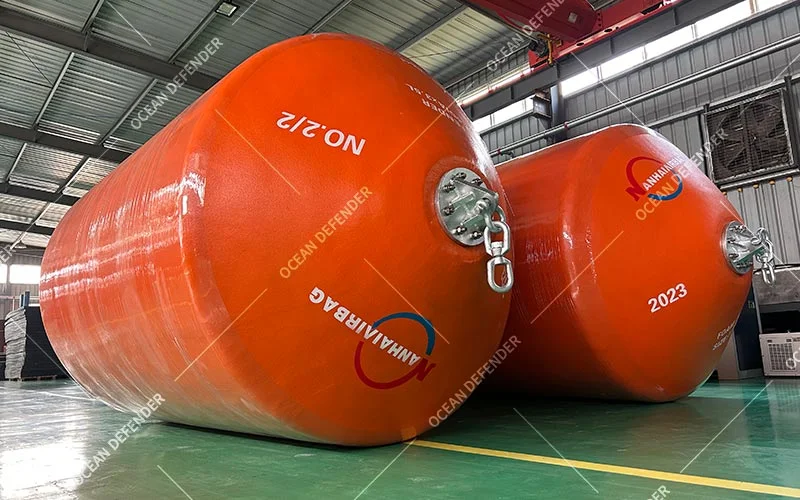What is a Floating Fender?
05/22/2025Why Foam Fenders Are Better Than Rubber?
05/23/2025Maintenance Tips for Foam-Filled Fenders
Foam-filled fenders are widely used in ports, terminals, and offshore platforms as part of essential marine fender systems. These tough, impact-absorbing devices help protect vessels and docks during berthing. But even the best fenders need some care to maintain peak performance.
Why Regular Maintenance of Foam Marine Fenders Matters
Foam-filled fenders are built to be durable, but neglecting maintenance can shorten their lifespan. Think of them like high-performance tires—they work hard under pressure and deserve attention. If a ship fender fails at the wrong time, it can result in costly damage to both the vessel and the dock.
Routine inspections and basic upkeep can prevent small issues from turning into major failures, saving you time, money, and safety risks.

Foam-Filled Fender Inspection: Key Visual Checks to Perform
Regular visual inspections are the first line of defense. Check the outer polyurethane skin for cuts, gouges, and signs of wear, especially in areas where vessels make direct contact. Look for uneven compression or bulging, which could indicate internal foam damage.

Cleaning Foam Marine Fenders: Remove Salt and Marine Growth
Cleaning is more than just cosmetic—it helps prevent long-term degradation. Rinse your foam marine fenders with fresh water to remove salt, algae, and grime. Clean surfaces also make damage easier to spot and repair.
Inspect Chains and Hardware on Ship Fender Systems
If your foam-filled fenders are connected with chains, swivels, or shackles, inspect these metal components regularly. Rust or excessive movement can indicate wear. Damaged connectors can fail under load, making this a critical part of your fender maintenance checklist.

Check Foam Fender Resilience and Deformation Over Time
Foam ship fenders are designed to compress and return to their original shape. If you notice they stay flattened or appear softer than normal, the internal foam core may be compromised. This could reduce energy absorption during berthing and increase impact risk.
Proper Storage for Portable Foam-Filled Fenders
If you’re using removable or floating foam fenders, store them in shaded, dry areas when not in use. Prolonged exposure to UV rays or harsh temperatures can damage the outer skin and reduce the fender’s effectiveness.
Consequences of Poor Foam Fender Maintenance
Skipping maintenance may not cause issues right away, but over time, neglected foam-filled marine fenders can fail during critical operations. A cracked surface, worn-out hardware, or soft core can all contribute to serious damage when a vessel docks at speed.

How to Extend the Life of Your Foam-Filled Marine Fenders
Basic care pays off. Just a few minutes a month spent checking and cleaning your fenders can add years to their service life. It also ensures a safer docking environment for ships, crew, and cargo.
People Also Ask (Related Questions for Marine Fenders)
What are foam-filled marine fenders used for?
Foam-filled marine fenders are used to absorb the energy of a docking vessel, protecting both the ship hull and the dock.
How long do foam ship fenders typically last?
With proper maintenance, foam-filled fenders can last 10 to 20 years, depending on environmental exposure and usage frequency.
Can foam-filled marine fenders be repaired?
Yes. Superficial damages can often be repaired using polyurethane kits. Internal damage, however, may require full replacement.
Foam fenders vs pneumatic fenders: which is better?
Foam fenders are more durable and require less maintenance, while pneumatic fenders offer greater energy absorption and flexibility. The choice depends on your application.
Looking for Marine Fender Solutions?
If you’re in the market for reliable, low-maintenance ship fenders or want to upgrade your current marine fender system, we can help. Our foam-filled fenders are engineered for performance and longevity—ideal for ports, terminals, and offshore structures.
Contact us today to learn more about our products or to request a custom quote.
